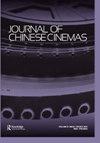Chinese film history and historiography
IF 0.4
3区 艺术学
0 FILM, RADIO, TELEVISION
引用次数: 3
Abstract
Reflecting on the remarkable rise of Chinese film studies, Paul G. Pickowicz observes that, merely 35 years ago, world-wide scholars knew little about Chinese cinema, yet now ‘scholarly interest in Chinese cinema is on the verge of overtaking or perhaps has already overtaken interest in modern Chinese literature’ (Huang 2014, vii), at least so in English scholarship. A sure sign of the maturity of Chinese film studies is the recent publication of three comprehensive volumes in English that cover various territories, trajectories, and historiographies (Lim and Ward 2011), investigating different aspects of history and geography, industry and institution, arts and media (Zhang 2013), and reevaluate competing interpretations of history, form, and structure (Rojas and Chow 2013). None of these volumes aspires to be a general history of Chinese cinema (as in Zhang 2004), but historiography remains a central organizing principle in all three. Another common feature of these volumes is the endeavor to move beyond the previously dominant national cinema paradigm (as in Hu 2003), which has been increasingly critiqued from the perspectives of polylocality (Zhang 2010, 16 28) and Sinophone cinema (Yue and Khoo 2014). This article represents my latest attempt at tracking the development of Chinese film history and historiography (Zhang 2000). One entrenched habit of film historiography is binary thinking, which has previously instituted the dominance of center over periphery, elite over popular, progressive over conservative, arts over industry, auteurs over institution, classical cinema over early cinema, fiction over documentary, the West over the non-West, and so on. In Chinese film studies, such binary habit is most pronounced in the 1963 official film history (Cheng, Li, and Xing 1963), which constructs a narrative exclusively centered on perceived struggles between the Communist (or Left-wing) versus the Nationalist (or Right-wing). At a subtle level, binary thinking is still operational in the narrativization of film history in terms of Shanghai versus Yan’an (Clark 1987), commercial cinema versus Left-wing cinema (Pang 2002), or Shanghai versus Hong Kong (Fu 2003). To reiterate my earlier call for moving ‘beyond binary imagination’ (Zhang 2008), I seek to map the latest development in Chinese film historiography by reviewing four new books on early Chinese cinema in relation to other recent scholarship in the field. In my view, Huang (2014) and Liao (2015) have both consolidated the global or transnational perspective on Chinese cinema, Bao (2015) has intervened in the emergent exploration of中国电影史与史学
在反思中国电影研究的显著崛起时,Paul G. Pickowicz观察到,仅仅在35年前,世界范围内的学者对中国电影知之甚少,但现在“对中国电影的学术兴趣即将超过或可能已经超过了对中国现代文学的兴趣”(Huang 2014, vii),至少在英国学术界是这样。中国电影研究成熟的一个明确标志是最近出版的三卷英文综合卷,涵盖了不同的领域、轨迹和历史编纂(Lim and Ward 2011),研究了历史和地理、工业和制度、艺术和媒体的不同方面(Zhang 2013),并重新评估了对历史、形式和结构的相互矛盾的解释(Rojas and Chow 2013)。这些书都不希望成为中国电影史的通史(就像张2004年写的那样),但史学仍然是这三本书的中心组织原则。这些书的另一个共同特征是努力超越先前占主导地位的国家电影范式(如Hu 2003),这种范式已从多地电影(Zhang 2010, 1628)和华语电影(Yue and Khoo 2014)的角度受到越来越多的批评。这篇文章代表了我追踪中国电影史和史学发展的最新尝试(Zhang 2000)。电影史学的一个根深蒂固的习惯是二元思维,这种思维先前确立了中心对边缘的统治地位,精英对大众的统治地位,进步对保守的统治地位,艺术对工业的统治地位,导演对机构的统治地位,古典电影对早期电影的统治地位,小说对纪录片的统治地位,西方对非西方的统治地位等等。在中国电影研究中,这种二元习惯在1963年的官方电影史(Cheng, Li, and Xing 1963)中最为明显,它构建了一个完全以共产党(或左翼)与国民党(或右翼)之间的感知斗争为中心的叙事。在微妙的层面上,二元思维仍然在电影史的叙事中发挥作用,比如上海与延安(Clark 1987)、商业电影与左翼电影(Pang 2002)、上海与香港(Fu 2003)。为了重申我之前对“超越二元想象”的呼吁(Zhang 2008),我试图通过回顾四本关于早期中国电影的新书,并将其与该领域其他近期学术研究联系起来,来描绘中国电影史学的最新发展。在我看来,黄(2014)和廖(2015)都巩固了中国电影的全球或跨国视角,鲍(2015)介入了新兴的探索
本文章由计算机程序翻译,如有差异,请以英文原文为准。
求助全文
约1分钟内获得全文
求助全文

 求助内容:
求助内容: 应助结果提醒方式:
应助结果提醒方式:


